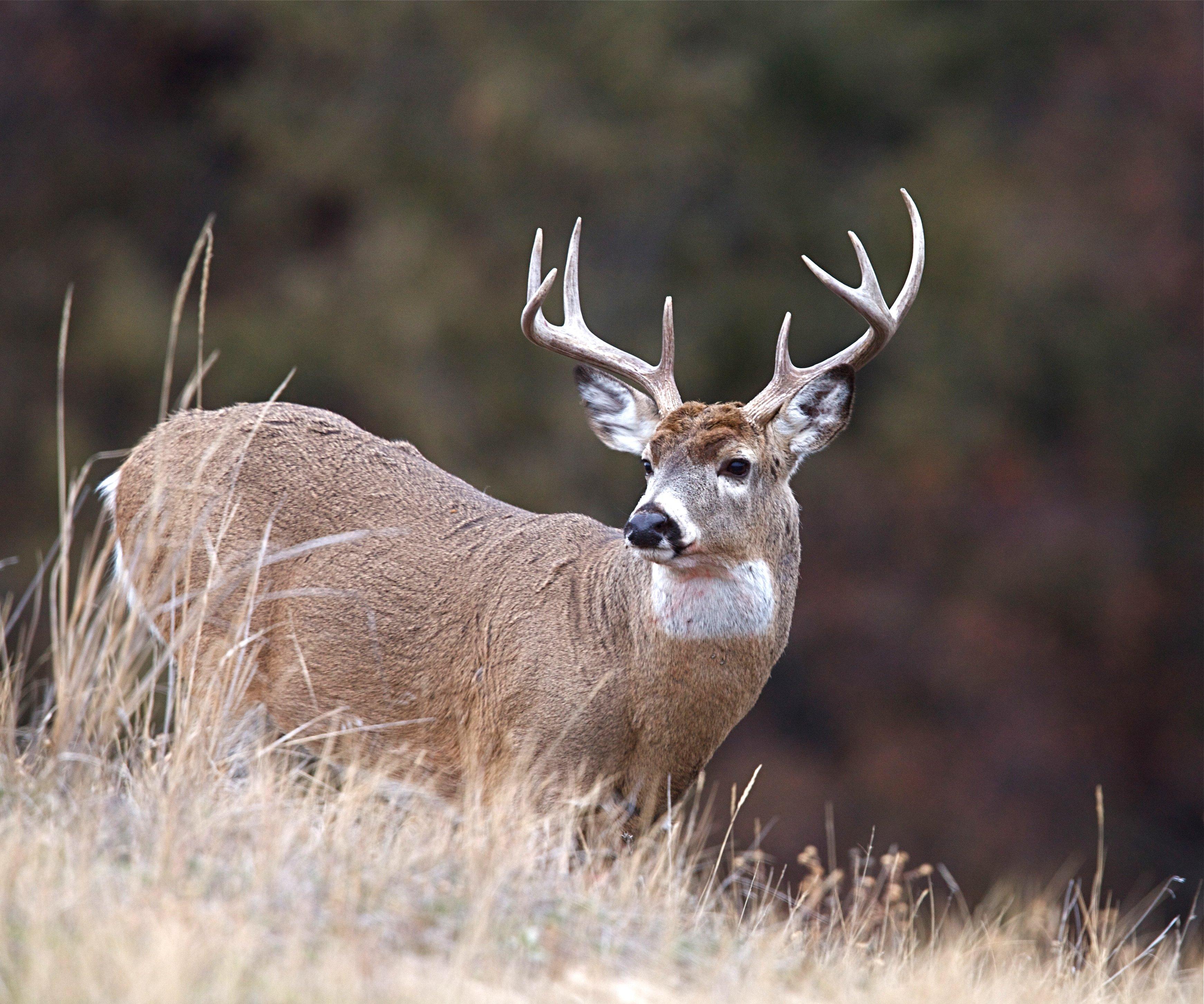Unknown
Est. Whitetail Population
136,000 (whitetail, mule deer, and blacktail)
No. Licenses Sold Annually
$63
This fee includes $34.50 for hunting license and $28.50 for deer tag.
Resident hunting license and deer permit
$615.50
This fee includes $172 for hunting license and $443.50 for deer tag.
Non-resident hunting license and deer permit
178 2/8"
Taken by Sterling Shaver in Wallowa County in 1982.
Record B&C Typical Stat
6
Total B&C Typical Entries
189"
Taken by Nancy Garrett in Grant County in 2007.
Record B&C Non-Typical Stat
1
Record B&C Non-Typical Entries

Check out the latest info for Oregon. Image by Tom Reichner
Season Dates (2023):
Historically, dates largely vary by unit and region across Oregon. But in the western zone, archery season ranges from Sept. 2 to Oct. 1, and the any-legal-weapon season from Nov. 11 through 17. The eastern Oregon archery season consists entirely of controlled hunts. Please check the state DNR’S WEBSITE for details.
The Grade: F
If you’re looking to hunt Columbia black-tailed deer, the Beaver State offers excellent opportunities. It has some of the best hunting on public and private land in the lower 48 for this handsome deer species, and some giant bucks to boot. Mule deer hunting across Oregon isn’t too shabby either, and combined, these deer subspecies account for most of Oregon’s 525,000-plus total deer population.
Because of significant outbreaks of epizootic hemorrhagic disease and ADENOVIRUS HEMORRHAGIC DISEASE (AHD) in Summer 2019, a new deer bag limit took effect in 2021 season. Also, there are several antlerless deer hunt closures across the state (649A, 654A, 655A, 655B1, and 655B2). Further, out-of-state deer hunters must pay about $25 more than in recent years. By comparison, Washington is nearly $200 cheaper for nonresident hunters, didn’t increase license prices, and offers better hunting. Still, Oregon is working to simplify season dates and hunting regs. In a state where it was once easier to understand legalese than deer regs, that counts for something.
“We do not have population estimates for white-tailed deer,” said Justin Dion, assistant wildlife biologist for the Oregon Department of Fish and Wildlife. “However, we know that populations of white-tailed deer in Umatilla County are still low due to AHD outbreaks. Black-tailed deer populations appear to be stable. Mule deer populations have been on a steady decline for several years in Oregon and in the Western United States as a whole.”
Finally, most of the whitetails are in the eastern third of the state. And all archery hunts in the eastern zone are controlled hunts, meaning anyone who goes afield must apply and be drawn.
All said, the Antler Nation project is about whitetails — and with Oregon’s whitetail population hovering at unknown levels (but certainly fewer than 15,000), trophy potential being slim and opportunities becoming even more limited with the draw-only hunts, we have no choice but to give it a failing grade this season.
Antler Nation Knowledge:
The main whitetail distribution in Oregon trickles in from Washington and Idaho in the northeastern corner of the state. Whitetails are particularly found in Union, Wallowa, and Umatilla counties. Although whitetail populations are relatively low, Oregon offers many public-land opportunities for hunters to stretch their legs.
“The burn scars created by the 2020 wildfires have the potential to be great deer hunting areas in a few years,” Dion said. “All of Oregon’s public lands are excellent opportunities to hunt and harvest deer. We recommend any public land that allows hunters to get as far from the roads as possible. Not only will that decrease hunter density, but that is where you will find the animals.”
Also unique to Oregon is the Columbian whitetail subspecies. These smaller-bodied deer once roamed throughout the Northwest, but now only isolated pockets exist in the Umpqua Basin near Roseburg and along the lower Columbia River. In 1967, they were first recognized as endangered and were listed under the state and federal Endangered Species Act soon thereafter. After almost 30 years of strict management, the deer were delisted, and a small huntable population exists in the Roseburg area. Only a handful of hunters will have the opportunity to experience a Columbian whitetail hunt in the coming years, but as management numbers increase, tag opportunities are sure to follow.
Don’t forget, commercial cervid attractants (urines) are now illegal to use and possess in Oregon, and the deadline for most deer tag sales is in August.
“Hunters who are looking to hunt Oregon should know that if they have questions, they should contact ODFW at our headquarters or at the specific regional office where they plan to hunt,” Dion said. “We are here to help.”











